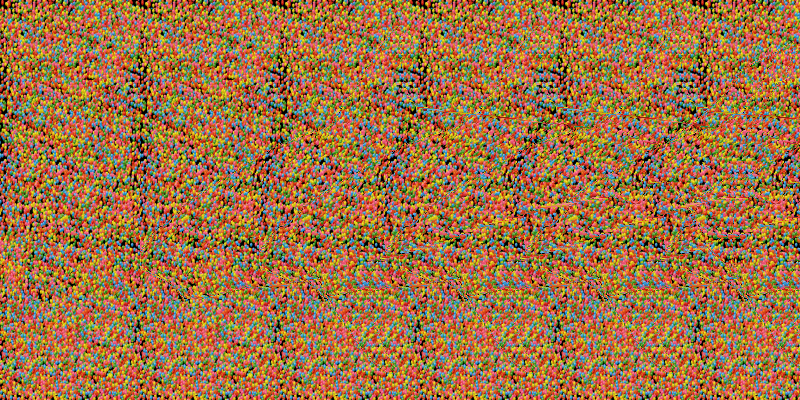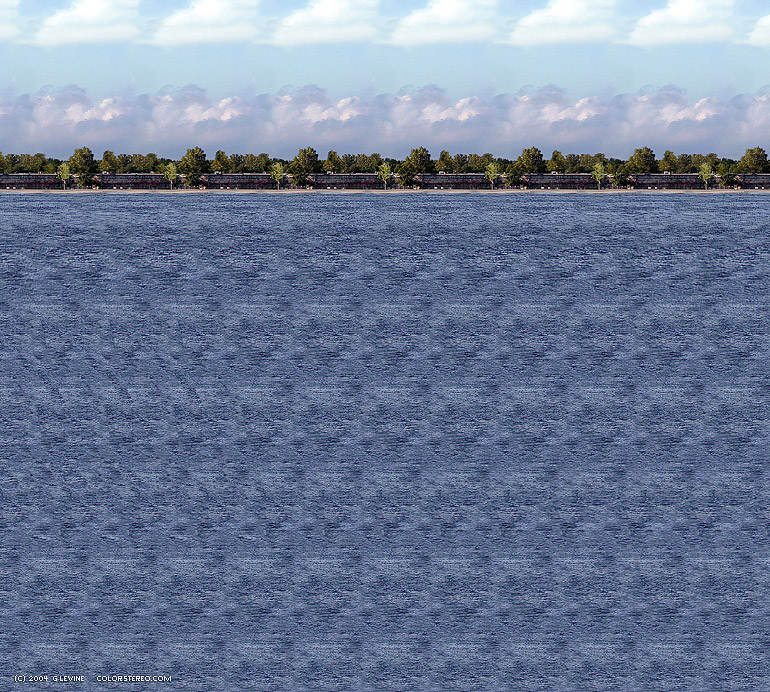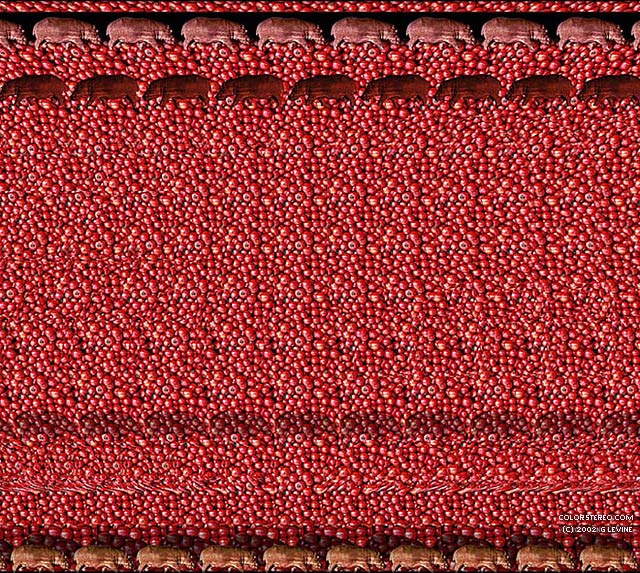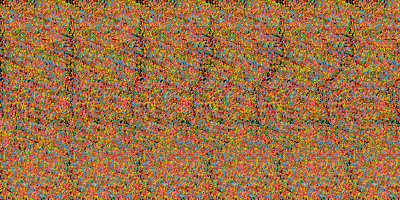Stereograms:
Stereograms are another interesting visual illusion with which can see 3D on a 2D plane.

What is a Stereogram?
An autostereogram commonly known as stereogram or Single Image Random Dot Stereogram (SIRD), is designed to create the visual illusion of a three-dimensional (3D) scene from a two-dimensional image in the human brain. In order to perceive 3D shapes in these autostereograms, the brain must overcome the normally automatic coordination between focusing and vergence.
The simplest type of autostereogram consists of horizontally repeating patterns and is known as a wallpaper autostereogram. When viewed with proper vergence, the repeating patterns appear to float above or below the background. The Magic Eye books feature another type of autostereogram called a random dot autostereogram. One such autostereogram is illustrated above right. In this type of autostereogram, every pixel in the image is computed from a pattern strip and a depth map. Usually, a hidden 3D scene emerges when the image is viewed with the correct vergence.
How to view the Hidden Images in them?
There are two ways an autostereogram can be viewed: wall-eyed and cross-eyed. Most autostereograms (including those in this article) are designed to be viewed in only one way, which is usually wall-eyed. Sounds interesting?
Wall-eyed viewing
The majority of autostereograms, including those in this article, are designed for divergent (wall-eyed) viewing. One way to help the brain concentrate on divergence instead of focusing is to hold the picture in front of the face, with the nose touching the picture. With the picture so close to their eyes, most people cannot focus on the picture. The brain may give up trying to move eye muscles in order to get a clear picture. If one slowly pulls back the picture away from the face, while refraining from focusing or rotating eyes, at some point the brain will lock onto a pair of patterns when the distance between them match the current convergence degree of the two eyeballs.
Another easy way is to stare at an object behind the picture in an attempt to establish proper divergence, while keeping part of the eyesight fixed on the picture to convince the brain to focus on the picture. A modified method has the viewer stare at her reflection on the shiny surface of the picture, which the brain perceives as being located twice as far away as the picture itself. This may help persuade the brain to adopt the required divergence while focusing on the nearby picture.
( If you want to read further , please go to viewing practice or Wikipedia Reference
Let us see some Samples? It will be exciting..I assure you!
Use the viewing technique on the following images, you can see 3D objects hidden in each of them!
Stereogram1: You can see a shark hiding in this!

Stereogram2: You can see the lake with its perspective and a man swimming under water .

Stereogram3: You can see a hippo hiding in this!

Stereogram4: You can see an animated shark in this!

To see more of them, please click : Samples in www.colorstereo.com
Now, in the green image on top of this page, you can see my name "AJITH" hidden in it..!
Please email your feedbacks and suggestions to me, ASAP. |